eLife Episode 36: Epilepsy and Sushi
In this episode we hear about epilepsy, the sushi-belt model of transport in neurons, a mother in ancient Troy, the Amazon rainforest and bias in scientific reporting.
In this episode
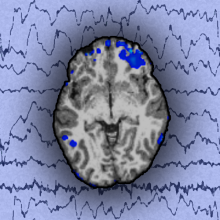
00:33 - Oxygen and epilepsy
Oxygen and epilepsy
with Cam Teskey, University of Calgary
About 1% of people are affected by epilepsy, in which a cluster of nerve cells in the brain spontaneously develop an abnormal pattern of firing. This spreads to adjacent brain areas, affecting their activity too, and the patient often becomes unconscious. Once the underlying abnormal nerve activity settles down, which can take a minute or two, the person begins to recover, but they’re often confused and drowsy for a long time afterwards, which can have profound effects on an individual’s quality of life. Cam Teskey, at the University of Calgary, explained to Chris Smith how, thanks to some careful observations in rats, he's worked out why this happens and highlighted a potential way to stop it…
Cam - People with epilepsy, after they’ve had a seizure, about 80% of them will experience what we call postictal or post seizure behavioural dysfunction. And it might be a sensory disturbance, it might be a cognitive disturbance or it might be a motor disturbance. In fact, a guy named Robert Bentley Todd described these motor disturbances over 150 years ago. But we never understood the brain mechanisms that are responsible. We reasoned that these postictal dysfunctions were very much like a transient ischemic attack, like a stroke. And so what we did is we took a very fine oxygen recording device and we put it into the brain of rats and we elicited seizures, and we just wanted to see if oxygen levels changed.
Chris - And do they?
Cam - They dramatically do. Interestingly, oxygen levels will drop somewhat during the seizure and then they will recover right back to baseline levels. But about a minute or two after, the oxygen levels drop dramatically, down below what we call the severe hypoxic threshold and this would go on for an hour before eventually coming back to baseline. And what we noticed is that there was a relationship between this hypoxic period and behavioural dysfunction in these rats. They were unable to form new memories and they were unable to show muscle strength if the seizures were in motor cortex.
Chris - Do you think or do you know whether the dip in oxygen tension is because there's a problem with supply or is it that that patch of the brain was so over exerted when the seizure was happening, there's an effective oxygen debt so the cells were just pulling the oxygen in like there's no tomorrow and this accounts for the locally recorded low level of oxygen?
Cam - Yeah. We learned two things. We learned that the blood vessels themselves that feed those local areas involved in the seizure, they constrict and they constrict to the point where you have less than 50% of the normal blood supply supplying those areas. It’s a reduction in blood supply that’s responsible for the low oxygen levels. But it’s not the seizure per se and what I mean by that is that we found two mechanisms that cause this vaso-constriction. And one of them is an enzyme called cyclooxygenase 2 or COX-2 for short. And what happens is COX-2 becomes very active during the seizure and what we did is we used a drug that blocks that enzyme. So when a seizure happens but you don’t get the vaso- constriction and you don’t get the low oxygen levels, then the animals did not show the behavioural disruption. So it’s not simply the seizure. What the seizure does is it starts a cascade of events mediated by COX-2 that result in this vaso-constriction, a reduction in blood flow and then a debt in oxygen. And it’s that that is responsible for these behavioural impairments.
Chris - Now aspirin is quite a good way to inhibit cyclooxygenase. So, do epilepsy sufferers who are on aspirin have a lower rate of postictal drowsiness?
Cam - That’s a terrific question, Chris, and we’ve been trying to scour the literature and some databases to answer that. I can't give you definitive answer right now. We have found other drugs that are far more effective. In fact, the most effective drug we have found in our animal models is ibuprofen and ibuprofen works on the COX-2 enzyme. And that is some work that we are hot after in the lab right now.
Chris - And have you looked in, in human patients to see if what is manifest in these experimental animals is there in people with genuine idiopathic human epilepsy?
Cam - Yes. I have a close friend and colleague by the name Paolo Federico. He’s a neurologist at the University of Calgary. We have something called a video EEG laboratory and people with epilepsy come in and they are weaned off of their anticonvulsant drugs or anti-seizure drugs. They will very often have spontaneous seizures. Now, the reason they're on this ward is to determine what areas of their brain are involved in the seizures as a run-up to potential brain surgery. But Paolo, using arterial spin labelling fMRI, looked one hour after seizures in 10 of these patients and 8 of them showed those areas of their brain that participated in the seizures had much reduced blood flow, analogous to what we were seeing in the rats.
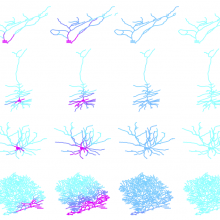
06:15 - Testing the sushi-belt model
Testing the sushi-belt model
with Timothy O'Leary, University of Cambridge
The nerves or neurones that send messages from one end of the body to the other have fascinated anatomists for over a century. An outstanding question is how do these cells, which can be metres in length, keep all of the remote parts of the cell supplied with energy and raw materials, which are normally made in just one central region of the cell. One popular idea is that neurones contain the microscopic equivalent of a conveyor belt system which transports materials to where they need to go inside the cell. But, by building a mathematical model of how this happens, one scientist who has found that anyone waiting for their dinner to be delivered by a system like this would end up very hungry indeed, so something else must be going on, as he explained to Chris Smith...
Timothy: I'm Dr. Timothy O’Leary based at the University of Cambridge and I'm a lecturer in Information Engineering and Neuroscience. Today, we’re in a sushi restaurant in Cambridge and it’s one of those sushi restaurants that has a snazzy belt mechanism that allows all of the dishes to be delivered to the customers as they sit around the sushi belt.
Chris: What has this got to do with cell biology?
Timothy: The cells I'm interested in are neurones and neurones are the cells that essentially make your brain work. A typical person has around 86 billion neurones and one neuron can potentially connect thousands of other neurones and it’s this connectivity that gives your brain its power. So, how do neurones connect to each other? Well, in order to reach out and connect to their neighbours, they have this long, thin, branch-like processes called dendrites. So if we looked at a neuron under a microscope, it would look like a tree, a very bushy tree with lots of branches and some of them very long. If we were to zoom in to this neuron and look inside one of the branches, we’d see there are lots of things moving up and down the branch. And this is because neurones are composed of lots of proteins and small components that all need to be manufactured and moved around inside the cell. So sometimes material needs to be made in one part of the cell and then shuttled along to another part of a cell. And the analogy that we use is the sushi belt because there really is something inside the cell that moves this cargo along in a similar fashion to a sushi belt.
Chris: Effectively, you can imagine the analogy is the nucleus is the recipe book with the chef standing there, cooking stuff, putting it on the plates that then go on a sushi belt. They're carted around the cell and the customers, the parts of a cell that need them are going to be lifting dishes off the sushi belt at various points and using them.
Timothy: That’s just the picture that we have, yes.
Chris:: What's wrong with it?
Timothy: Life isn’t really like that. At the molecular level, the movements of these particles are stochastic, that means there's chance element in it. To explain what that would mean in the sushi restaurant analogy, let’s imagine that we’re waiting for a tuna roll and it’s a few feet away. But then randomly, the belt changes direction and starts moving the other way, and that would be very frustrating. But what would be even more frustrating is if a person next to us who doesn’t even want the tuna roll just took the tuna roll, sat it on their table for a while and then maybe decided to put it back on the belt. Those are the kinds of things that can occur at the molecular level by chance and it’s for this reason that we can expect long delays sometimes in this transport mechanism within a neuron.
Chris: Can cells tolerate not getting their tuna roll for ages or actually, are you saying that this is such a significant constraint. There must be something else going on because cells would not be able to put up with that?
Timothy: That was actually the motivation for this study. What we did was we took experimental data where scientists had measured the movements of these microscopic particles and then we simply took the measurements and we did the maths. We figured out how long it would take on average a collection of particles to move across a typical sized neuron. And a number turned out to be disappointingly large. It can take many hours or days to distribute cargo throughout a typical neuron. And this came as a surprise because many of us thought that cargo could be distributed on the order of minutes or hours at the very worst.
Chris: Is it not that the cell does something else which could be, it says, “Well, I’ll tolerate some constraints of the sushi belt but at the same time, I’ll also have my own local solution, so I’ll make some stuff myself locally so I'm not held up. So if it’s not available on the sushi belt right now, I’ll make my own.”?
Timothy: That’s absolutely true and in fact, in recent years, it’s been observed that neurones do have the capacity to make things that they need locally. However, the ingredients for the things that they make locally and the machinery for making them still need to be delivered to those sites. Our claim is that that may take a lot longer than is currently thought.
Chris: I suppose what you have done is, a.) to highlight some of these inconsistencies, but you’ve also now generated with this model a bunch of testable hypotheses.
Timothy: That’s absolutely true. So, it’s now becoming possible to peer inside a living neuron and watch these components moving around. And the kinds of experiments people can do now can start to address some of the predictions of the model. We might find that actually, neurones are far cleverer than we think and they're able to distribute components far more efficiently than our calculations suggest. And that’s why our model made the minimal possible set of assumptions. Now, if further observations contradict those predictions, then we know that actually, there are parts missing to our understanding of this molecular sushi belt.
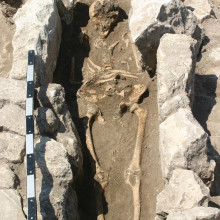
12:20 - Lessons from Troy
Lessons from Troy
with Caitlin Pepperell, University of Wisconsin-Madison
In some parts of the world mortality associated with childbirth can be as high as 50%. But this is not a new problem as Chris Smith hears from Caitlin Pepperell at the University of Wisconsin-Madison...
Caitlin: The story starts with Henrike Kiesewetter who’s an archaeologist and a physician examining a cemetery from the ancient city of Troy that dates back about 800 years. While she was examining a skeleton of a young woman, she found two nodules at the base of her ribs. The nodules are about the size of strawberries and they just look like chalky white material. Dr Kiesewetter thought that they were pieces of calcified lung from tuberculosis.
Chris: That would fit with the whole idea that individuals who have TB often do get calcifications in their lung tissue, don’t they? They would be sort of in the right anatomical position for that, although TB likes the top of the lung rather than the bottom, doesn’t it?
Caitlin: Yes, exactly. Although, of course, things would easily have moved around in the intervening 800 years. So, she gave the nodules to an archaeologist, William Aylward, who is here at the University of Wisconsin-Madison, and Dr Aylward contacted me because I have done a lot of work on evolution of tuberculosis.
Chris: So, you're handed by this archaeologist two lumps of chalky material about the size of strawberries. How did you proceed?
Caitlin: I'm not an ancient DNA expert. So, the first thing that I did was to enlist the help of an ancient DNA specialist so that we could recover DNA from the nodules and make a diagnosis. In this case, we got extraordinary amounts of ancient bacterial and human DNA.
Chris: Now, was this DNA from bacteria that could be in the environment? So, when this individual died and was buried, they could’ve colonised the body at that point or do you think these bugs were intimately linked to those lesions that would’ve occurred when that person was alive?
Caitlin: We think that they were from the lesions and from when the young woman was alive. The reason is that we also looked in the soil and did not find these bacteria. They're also bacteria that are well-known to cause disease in humans.
Chris: What were they?
Caitlin: So there are two species, Staphylococcus saprophyticus and Gardnerella vaginalis, both a mouthful. Staph saprophyticus is a common cause of urinary tract infections and Gardnerella vaginalis is part of the normal microbiome or bacteria that are normally found in the body, and also, causes a range of diseases including pregnancy complications.
Chris: So, do you think that’s what this was? Do you think these nodules were some kind of pregnancy complication?
Caitlin: I do. I think that she had an infection called chorioamnionitis which is an infection around the developing foetus and the placenta and it can cause disease to the foetus and loss of the pregnancy as well as disease in the mother. Her age at the time of death was estimated from her remains and she was thought to be between 25 and 35 years old at the time of death.
Chris: So why did she die?
Caitlin: We don’t know for sure, but I think given the amount of bacteria that was recovered from the nodules, she had a very severe infection and I think it’s quite likely that this infection is what led to her death.
Chris: What is important about this paper other than that it is extremely interesting and you have found this pathology from 800 years ago? What are the implications of this and what does it teach us?
Caitlin: It’s the first, really detailed look at pregnancy related infection from the archeological record. We know that complications at pregnancy are very important in the modern world and have been very important historically as well. So, in terms of learning about maternal health in the ancient world, I think it’s very significant. As far as the bacteria go, I think we learned quite a bit about how these two species of bacteria have evolved, how they changed and didn’t change over time. And this helps us to understand how disease-causing bacteria evolve in general.
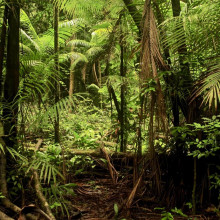
17:31 - Disturbing the carbon balance
Disturbing the carbon balance
with Camille Piponiot, UMR Écologie des Forêts de Guyane
The Amazon rainforest covers an area of more than 5 and a half million square kilometres in South America. Some describe it as the “lungs of the planet” because, each year, the forest soaks up more than 2 billion tonnes of carbon dioxide. But the area is under threat from logging, including the practice of “selective logging” although how this affects the forest - and the carbon budget - isn’t known. Chris Smith hears from one researcher who has been finding out...
Camille: My name is Camille Piponiot and I work at the University of French Guiana. We’re looking here at ‘selective logging’ which is a widespread practice in the Amazon. It consists in selectively harvesting a few trees and leaving the rest of the forest to regenerate after logging. We know that it has big impact on the forest – the trees that you harvest and the trees that you damage by harvesting some trees will emit carbon to the atmosphere which means greenhouse gases. But what we also know is that the rest of the forest that is left to regrowth will store carbon back and that’s what we are interested in – how it stores carbon.
Chris: This is quite a complicated question though, isn’t it? So how did you approach studying that and working out what the impact of that process is across the Amazon and is it the same all over the Amazon, because the Amazon is a big place?
Camille: Yes. So, what we have is data from satellites that can tell you how the forest is growing or you can have data that has been measured on the ground with for example, measurement of tree growth. Each tree is measured and that’s what we have. We have some plots all over the Amazon that have been logged and then that have been measured for several years as much as 30 years. By using that data, we have a lot of data on all the processes that go on in the forest after logging.
Chris: So you can basically work out how much carbon must be being emitted when you look at the scale of the logging and the removal of certain trees, and damage of trees when big trees are felled. And then you can look at the long term – what grows back and therefore, how much carbon do you think it’s drawing down as it grows back and you can sort of do the carbon equation.
Camille: Exactly. You can measure very easily how much carbon was emitted in the first year. It’s a lot harder to have data on the – all the processes that go on after logging because it lasts for many decades.
Chris: So, on what sort of scale is this happening? Tell us how much of the Amazon is being exploited in this way?
Camille: So, in the Amazon, 2 million hectares are exploited every year at least, and that means 1 per cent of the whole region every year.
Chris: Gosh! That’s a lot, isn’t it – 1%? And what do the numbers look like when you begin to do the sums for carbon? What does the equation look like?
Camille: We looked at the effect of climate and also soil properties, and we found that there were big differences between regions, and that the regions that have less rainfall and more seasonality of rainfall will have less carbon storage after logging. And so, the forest grows less after logging and stores less carbon than in the north of the Amazon where there is more rainfall and less seasonality of rainfall. And there, we saw that stored more carbon especially the big trees that were left after logging.
Chris: So what you're saying is that although you found this relationship, the Amazon isn’t made equal everywhere and there are some areas which are going to be more vulnerable to certain types of logging or agricultural practice than other places. And so, it’s not just a simple case of, we have one-size-fits-all as a policy for how to log the Amazon sustainably.
Camille: Yes, exactly. We saw that everywhere, the big trees were the ones that were storing more carbon. So, I guess that having logging practices that avoid damage on big trees will help the carbon recovery after logging, but not all regions are equal and the south of the Amazon is more vulnerable to logging or maybe other practices and grows slower after logging.
Chris: So, what is the take home message and how does this change our opinion of the Amazon is managed?
Camille: The Amazon is a very diverse region and when we think about planning logging, you have to be very careful of where we are because it might affect some forests more than others. Also, if we want to improve carbon models, taking into account climatic or other environmental variables is very important because you could improve a lot the accuracy of the models.
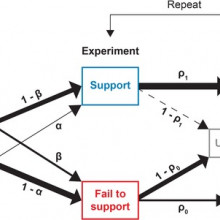
22:40 - Distorting the facts
Distorting the facts
with Kevin Gross, North Carolina State University
Now if you consider what we’ve covered in the programme this month you might spot that we haven’t highlighted any negative results. And we’re not alone. The vast bulk of the research that gets published each week focuses on positive findings. But this, Kevin Gross tells Chris Smith, is the scientific equivalent of shooting ourselves in the foot...
Kevin - So, what we’ve done is take a look at the consequences of a certain tendency in science for the outlets that scientists have to communicate their findings, for those outlets to preferentially communicate positive results. And this tendency exists for very logical and understandable reasons, but this tendency, if going a little bit too far can actually start to degrade the ability of science as a collective enterprise to sift actual true patterns from false patterns. What we’re doing in our paper is looking at how that is sort of mediated by the tendency of scientific publications to emphasize positive results as opposed to negative ones.
Chris - How did you do it?
Kevin - The tools that we use are mathematical modeling. So, we’ve put together a mathematical abstraction of the publication process in a sort of an embarrassingly simplistic way and looked at the dynamics of how scientists as a community evaluate the evidence for a scientific idea. A very lovely metaphor that comes to us from the French Philosopher Bruno Latour thinks about this process as sort of a rugby game on an epistemological pitch where the two end zones represent science as a whole, accepting an idea or rejecting it. Each successive study that gets published sort of pushes that ball towards one end zone or the other. And so, that is more or less what we’ve done.
Chris - And when the ball goes down at one end and a try is scored, that’s when a fact effectively is planted in the psyche, is it?
Kevin - Exactly. That’s meant to represent the outcome where the scientific community as a whole sort of considers the matter to be settled.
Chris - I'm paraphrasing what you're saying, but the problem is, if we take the best players from the New Zealand side, the South African side, and dare I say, the English team, and we load the dice with all the best players on one side, pushing the ball towards the ‘it’s a fact’ side of the equation, inevitably, some things are going to get turned into facts when in reality, there might be scant evidence to support that really.
Kevin - Yeah, that’s a nice way of putting it. The publication process - the human institution we built up to communicate our results to one another. Because it has this sort of very understandable preference for results that seem to suggest that a pattern exists, then if that preference is strong enough, it does create sort of a tendency for the rugby ball to move towards one end zone in a way that makes the whole process a bit less efficient.
Chris - So when you run your model, what emerges as really important drivers and what does this tell us about where we’re going – I don’t want to use the word ‘wrong’ but where we could perhaps have scope for improvement in order to minimize this bias in the future?
Kevin - Yeah. So that’s a great question. That sort of naturally begs the question of what remedies are there or how can we improve the processes that we have. And I think one thing that our model is showing is that one answer that you might think about if we go back to the rugby metaphor is to just make the pitch a bit longer. We can move the end zones back, go a little bit longer before we consider a matter settled. What our model shows is that that might prolong the game but it doesn’t really help in the end. You still are left with sort of an inefficient process of sorting true claims from false ones. What does help is to value the communication of results that do not detect patterns. That is to say to value the reporting of negative results which is I think both a matter of editorial practices at journals or conference proceedings or what not. But there's a larger question than that and that we, as a scientific community have sort of long been in the mindset of valuing positive results more than negative ones. Again, for some good reasons. But I do think we might want to rethink that habit a bit.
Chris - Some people have suggested that one approach might be to encourage people to publish all their data because some of these biases are emerging as a consequence of cherry picking of data. Where do you stand on that?
Kevin - In a world where we had infinite mental capacity to learn about all the work that has been done, it would certainly make sense to publish every last datum. Scientists only have finite cognitive abilities so there is an argument out there called ‘the cluttered office problem’ that if you publish every last datum, you might lose the signals out there in a sea of noise. I think that’s a really compelling question. I think there's still more work to be done towards that end to understand what an optimal or good place to land is on that spectrum. As to whether we should be publishing every datum, but I certainly think we should be publishing more negative results than we currently are.
Related Content
- Previous Can we create artificial rain?
- Next Making Goodwill Go Viral










Comments
Add a comment